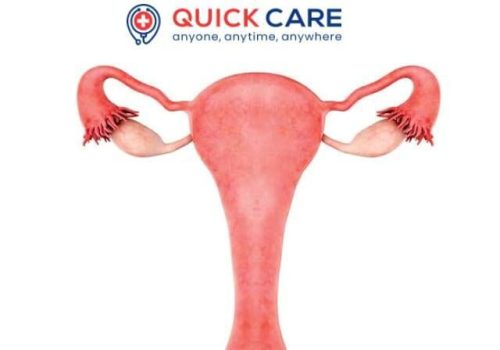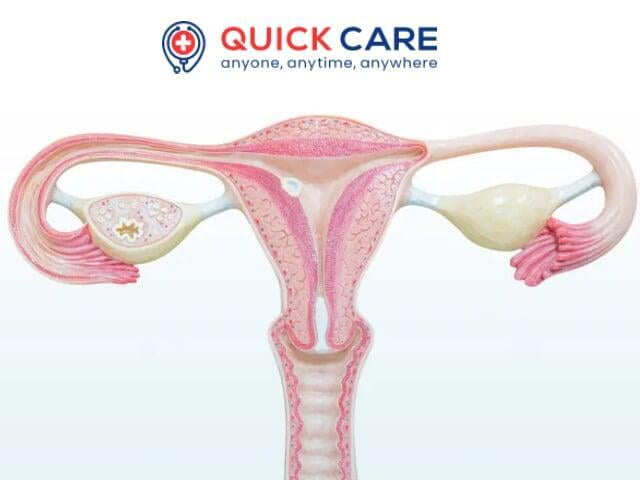What is Amenorrhea Problem? Its Cause & Diagnosis
Amenorrhea Disorder - Causes, Types & Treatment
The lack of menstruation (one or two missing menstrual periods) is amenorrhea (uh-men-o-REE-uh). Amenorrhea is present in women who have missed at least three menstrual periods in a row, as are girls who have not started menstruation by the age of 15.
Pregnancy is the most prominent cause of amenorrhea. Some sources of amenorrhea include reproductive organs or gland disorders that help control the levels of hormones. Amenorrhea is mostly resolved by management of the underlying disease.
Amenorrhea includes one or two periods of absence. Speak to the healthcare provider whether you are older than 15 and have not had your first cycle (primary amenorrhea) or have skipped a period for a few months (secondary amenorrhea). The symptom of a treatable disorder is always amenorrhea. Your normal menstrual period will normally return with care.

What does amenorrhea mean?
Amenorrhea is when your menstrual cycle doesn’t happen to you. It can be intermittent or permanent. Amenorrhea may result from a shift in the role of some part of the female reproductive system or from a problem.
There are periods, such as during puberty, during breastfeeding, and during menopause, that you are not expected to have your period. It should be checked if amenorrhea persists for longer than three months.
What forms of amenorrhea are there?
Two classifications of amenorrhea exist:
Primary amenorrhea is when you have not received the first symptoms of puberty before the age of 15 or within five years. It may arise due to menstruation-related changes in muscles, glands and hormones.
Primary amenorrhea is when cycles do not begin during adolescence.
According to the National Institutes of Health, a person should seek medical assistance if the time does not start at the age of 16 years.
It is unusual to develop primary amenorrhea. It affects less than 0.1 percent of people in the United States.
Secondary amenorrhea is when you have normal intervals, then for at least three months, you stop having your cycle, or you stop your periods for six months when they have been intermittent before. Pregnancy, depression and sickness may be among the causes.
This is when cycles begin, but they cease to exist then.
During pregnancy or during breastfeeding, this is common, but it can also mean there is a problem.
Secondary amenorrhea in the U.S. is estimated to affect about 4% of women during their lifetime.
Typically, one missed period is not a symptom of a health issue, but if this occurs, many people would call for a paternity test.
Secondary amenorrhea would be considered by a doctor if the individual:
- They used to have intermittent periods and would have no periods for 3 months.
- They used to have erratic cycles and would have no periods for 6 months.
Appendicitis pain can begin as a mild cramping. With time, it also gets more steady and more serious. It can begin in your upper abdomen or belly button region before spreading to the lower right quadrant of your abdomen.
If you are constipated and fear that you might have appendicitis, stop consuming laxatives or taking an enema. These treatments can cause the appendix to burst.
Call the doctor if you have tenderness on the right side of your abdomen along with all other signs of appendicitis. Appendicitis can rapidly become a medical emergency. Get the details you need to hear about this critical disorder.
Causes for amenorrhea
For primary and secondary amenorrhea, the cause will probably be different.
Primary Amenorrhea
A familial history of delayed menstruation is a common cause of primary amenorrhea. There is a genetic issue occasionally.
Genetic conditions that can stop the proper functioning of the ovaries include:
Syndrome of Turner
Androgen insensitivity syndrome, which contributes to high testosterone levels
Mullerian flaws
A malformation of the genital organs is a Mullerian defect. There is no development of the uterus and fallopian tubes where they should be.
There may be a structural problem from birth that is present in relation to the genitals. The uterus and fallopian tubes may be missing occasionally. Sometimes there are fusion problems in which the tubes don’t come together properly.
The ovaries, breasts, and clitoris form correctly in Müllerian agenesis, or Mayer-Rokitansky-KusterHauser (MRKH) syndrome, but there is no vaginal opening, and the cervix and uterus may not be properly formed.
In this case, the normal pattern will not be followed by reproductive development, and menstruation may not be possible.
Secondary Amenorrhea
Popular causes of secondary amenorrhea include the following:
- Pregnancy, pregnancy (which is the most common cause of secondary amenorrhea).
- Breastfeeding
- Menopause,
- Any types of fertility control, such as Depo Provera, IUDs and certain birth control tablets.
- Chemotherapy and radiotherapy for cancer.
- Previous uterine surgery followed by scarring (for example, if you had a dilation and curettage, often called D&C).
- Stress.
- Poor diet,
- Weight change—extreme weight loss or obesity.
- Exercise correlated with low weight.
- Continuous sickness or chronic disease.
Symptoms of Amenorrhea Disorder
There are some other signs you may have in addition to not getting your period based on the cause of your amenorrhea:
- Pressure in your part of the pelvis
- Your view shifts
- Headache
- The Acne
- Loss of hair
- More hair production on your skin
- Your nipples get a milky discharge
- No development of a breast (in primary amenorrhea)
Diagnosis of Amenorrhea
Amenorrhea is a symptom, not a disease. The doctor will try to find out why there is no menstruation.
Primary amenorrhea
If a person has not started menstruating until he or she is 16 years old, a doctor will inquire about their family background and conduct a series of tests.
These will provide measures to determine the levels of the following hormones:
- Stimulating hormone follicle (FSH)
- Hormone luteinizing (LH)
- Stimulating hormone of the thyroid (TSH)
- They will also perform a physical examination.
Secondary amenorrhea
The diagnosis of secondary amenorrhea would depend on the root cause of the problem.
Before conducting any tests, the physician can ask questions to find out:
- At what age menstruation starts
- Whether the individual is being sexually active
- If conception is likely,
- If weight loss or weight gain has happened, and what kind of workout regimen does the individual follow?
- The length and regularity of the menstrual cycle, whether the bleeding is severe or light.
They can then recommend a number of tests, depending on what the cause appears to be.
They may include:
- Test of pregnancy
- Testing the thyroid function
- Ovarian Function Test
- Tests for androgen and other hormones
Imaging tests may include the following:
- MRI, CT, or ultrasound scanning
- Hysteroscopy in which a thin, lighted camera passes through the vagina and cervix to examine the uterus from the inside.
Find me here
Categories
Recent Posts
-

How Often Should You Have a Well Child Exam?
-

What is Ankylosing Spondylitis Disease ? What are its causes?
-

What is Appendicitis Problem ? Causes, Diagnosis
-

What is Amenorrhea Problem? Its Cause & Diagnosis
-

Know everything about Amyloidosis Disorder
-

Get Complete info on Blood in Urine (Hematuria) Disease